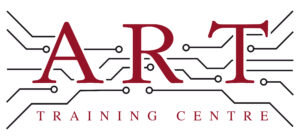Definition
Copper Foil is a thin sheet of copper used in electronics manufacturing, particularly for creating conductive pathways on printed circuit boards (PCBs). It serves as a key material in the construction of PCBs, enabling electrical connections between various components. Its properties, including excellent conductivity and malleability, make it an essential component in the electronics industry.
How It’s Used in the Industry
Copper foil is primarily applied in the production of printed circuit boards (PCBs) during the layering process. Initially, a substrate is coated with copper foil, which is then etched to create specific circuit patterns. This process involves applying a photosensitive film to the copper, exposing it to light, and developing it to reveal the desired design. After etching, the remaining copper forms the conductive pathways. For technicians, understanding copper foil’s role is crucial for both assembly and rework, as it directly impacts the board’s electrical performance and reliability. Proper handling and application of copper foil are essential for both training and experienced professionals to ensure high-quality electronics.
History & Origins
Copper foil became common in electronics manufacturing during the mid-20th century, coinciding with the rise of printed circuit board technology. As electronic devices became more complex, the need for reliable and efficient circuit connections grew. The establishment of standards, such as those from IPC (Institute of Printed Circuits), further solidified its importance in ensuring quality and consistency in PCB production. Advancements in manufacturing techniques allowed for thinner and more precise copper foils, making them integral to modern electronics.
Variations
There are several types of copper foil, including electrodeposited (ED) and rolled copper foil. ED copper foil is thinner and offers better electrical properties, making it ideal for high-frequency applications. Rolled copper foil, on the other hand, is thicker and often used in applications requiring greater strength. These variations differ in their manufacturing processes and applications, allowing manufacturers to choose the appropriate type based on specific electronic needs.
Modern Applications
Today, copper foil is vital in the production of both surface mount and through-hole components in electronics. Its use extends to advanced assembly techniques, ensuring that devices meet stringent quality and reliability standards. Compliance with IPC standards is crucial for manufacturers, as it guarantees that the copper foil used contributes to the overall performance and durability of the electronic products. Its role in training programs also helps new technicians understand the importance of quality materials in electronics assembly.
Practical Tips & Training
When working with copper foil, it’s important to ensure proper handling to avoid contamination and damage. Always wear appropriate safety gear, such as gloves and goggles, to protect against sharp edges. Inspect copper foil for any defects before use, as this can affect the final product’s quality. Familiarity with tools like etching machines and laminators is beneficial. Structured training and certification in electronics can enhance understanding of copper foil applications, ensuring technicians are well-prepared for industry standards.


